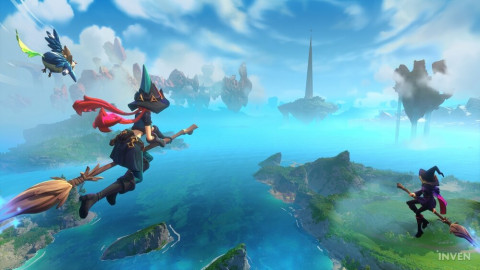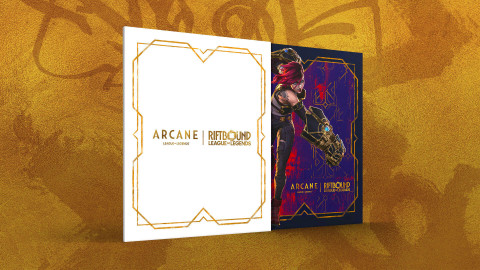After contributing art and co-development to world-renowned titles such as League of Legends, Overwatch 2, and VALORANT, Envar Studio has officially announced its first original IP, Witchspire, through its in-house development division, Envar Games. The game was first revealed during the Future Games Show at gamescom 2025 in Cologne, Germany. A survival–crafting adventure set in a magical world, Witchspire is targeting a PC Early Access release in 2026.
In Witchspire, players take on the role of a young witch or wizard studying at a school of magic who accidentally activates an ancient relic known as the Witchspire—only to be cast into an unknown world. Alone, or in cooperation with up to three friends, players embark on an epic journey to reawaken this newly discovered Witchspire in order to return home. Along the way, they’ll uncover secrets of an ancient civilization and confront creatures corrupted by dark powers.
The defining feature of Witchspire is what the developers call “magical survival.” They explained: “We always ask ourselves, ‘How can we make this cooler with magic?’” The result is a unique twist on genre conventions: when ore is scarce, players can summon a mineral comet from the sky; when wood is scarce, they can magically conjure an entire forest. Movement is also augmented by spells, with abilities like the Spirit Jump, which propels you up sheer cliffs, or Blink, which lets you instantly dodge attacks.
Another eye-catching system is the Astral Projection building mechanic. Players can leave their physical bodies and soar freely as spirits, constructing their own homes creatively without the constraints of gravity or the dangers of falling.
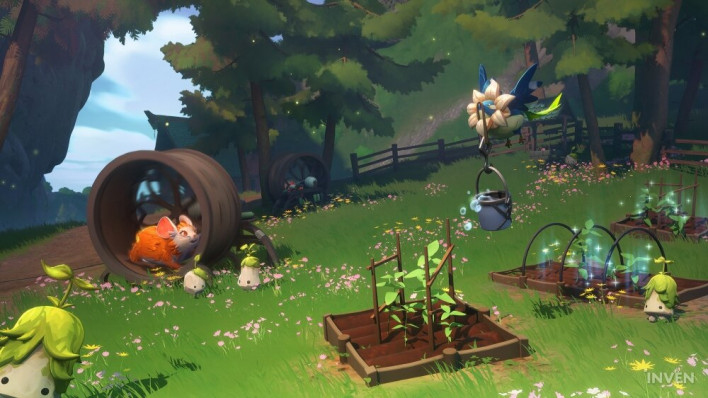
Creature collecting—via companions called Familiars—is also a core pillar of the game. Players begin by choosing one of four starter Familiars, then can tame more than 60 unique creatures encountered in the wild. Familiars can become powerful allies in battle, but they can also serve as helpful partners back home—running spinning machines, tending crops, or otherwise lending a hand.
In combat, players can bring along up to three Familiars, swapping them strategically to suit the situation. Each Familiar grows along its own skill tree, and in addition to common, epic, and legendary tiers, there exists a very rare version called "Celestial", adding another layer of excitement for collectors.
To ease entry for newcomers, Witchspire omits passive mechanics like hunger and temperature meters, lowering barriers to play. In multiplayer, veteran players can craft powerful gear for friends who join later, helping them quickly overcome level gaps.
At the same time, the game also caters to hardcore survival fans, offering tougher options such as Permadeath, where both characters and Familiars cannot be revived after falling—heightening the sense of risk and challenge.
At gamescom 2025 we spoke with Liam O’Neill, Head of Envar Games and Lead Producer on Witchspire, and Oliver Granlund, the game’s Director, to learn more.

Envar Studio is known for art contributions to major IP like League of Legends and VALORANT. What led you to create a wholly owned IP?
Liam O’Neill: We’ve been fortunate to collaborate with outstanding teams at Riot, Blizzard, and Tencent. At the same time, we’ve always dreamed of making our own IP and our own game, and to make that real we founded Envar’s new division, Envar Games.
How does it feel to be opening a new chapter for the studio?
Liam O’Neill: Witchspire opens that new chapter for us as a studio, and we’re incredibly proud of it. We’ve worked with industry giants like Riot Games, Blizzard Entertainment, Tencent, Netflix, and Wizards of the Coast, and now we have the chance to create our own world in the survival and adventure space. This announcement is the first step toward building a AA studio and establishing Witchspire as a fresh, high-quality IP.
The survival genre is fiercely competitive. Why choose “magical survival” for your debut?
Liam O’Neill: We’re passionate fans of survival games, and it mattered to us that Witchspire feel fresh to survival players. We chose witches and wizards and a vibrant magical world, and we think “magic” lets us reinvent many core loops—movement, gathering, and my personal favorite, building.
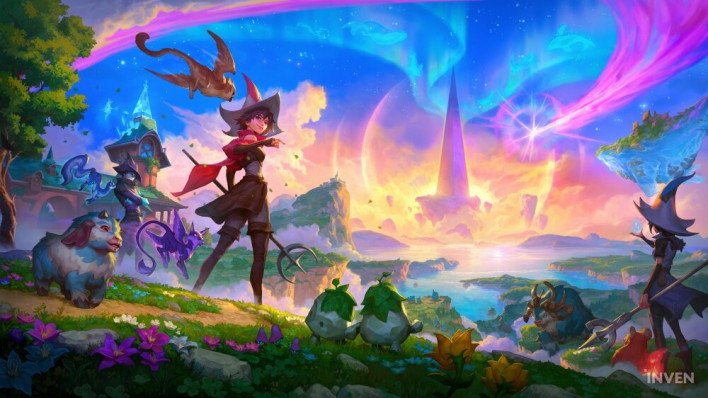
What’s the central artistic vision for Witchspire? How did you define its unique visual identity?
Oliver Granlund: The style is a blend of inspirations. We were especially drawn to mixing animation-like influences from Asian culture with our Nordic roots. Studio Ghibli was a big tone-setter. We didn’t want “the stereotypical witch”—ours can wield a magical sword, the spellblade, for example. The goal is something familiar, yet distinctly our own.

The Astral Projection–based building is very distinctive. How does it work, and what sets it apart from other survival games?
Liam O’Neill: Astral Projection lets you leave the physical world and float as a spirit. You craft a hearth that anchors your home, and as you level it up the Astral Projection radius expands. No ramps, no platforms, no fear of falling—just pure creativity and building.
Oliver Granlund: We wanted magic to make building more fun and accessible—almost like Minecraft’s Creative Mode.
For some first-time players, high building freedom can be overwhelming. Will you offer template “model homes”?
Liam O’Neill: Great question. Our goal is to make simple builds truly simple, while giving dedicated builders the freedom to make something complex. We’ll keep validating through playtests to ensure newcomers can build something cool quickly and easily.
How does resource gathering work?
Oliver Granlund: With magic. Midgame logging tools can fell multiple trees at once. When forests run out, you can conjure a new one—decorative or harvestable. For mining, you can send out phantom pickaxes to work for you.
Liam O’Neill: Whatever we design, we ask ourselves, “How can magic make this cooler?”
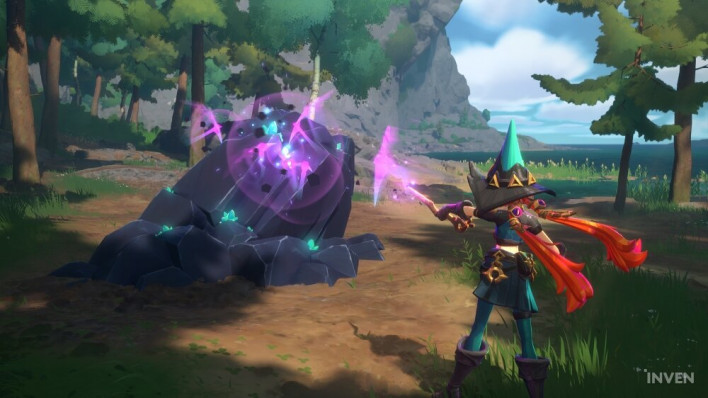
How does player progression work?
Liam O’Neill: There are several layers. Leveling your character earns points that unlock the Luminaries tech tree—constellation-inspired upgrades that open recipes, passives, and building parts so you can specialize your playstyle. Using specific skills (like logging or the spellblade) levels those up and helps unlock related Luminaries. But gear matters most: the right robe, hat, trinkets, and weapon make the biggest difference.
The Familiar Bonding system sounds intriguing. What role do they play, and how does bonding work?
Liam O’Neill: Bonding starts when you tame a wild creature to become a Familiar who adventures with you or lives at home. You can assign tasks—crafting, resource collection, and more—and as they level, each creature branches into its own skill tree with unique passives.
And rarity?
Liam O’Neill: Every creature rolls a rarity. You’ll find common examples, but rare, epic, and legendary ones roll different, randomized traits—combat, crafting, gathering, and so on—which leads to fun combinations and reasons to keep hunting for that perfect version.
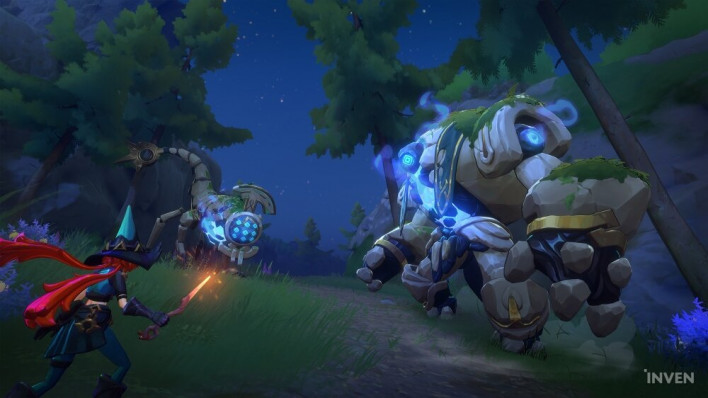
Can you bring only one Familiar into battle?
Liam O’Neill: You can slot three and have one active at a time. You can swap mid-fight—say, rotate out when one’s low on health—so there’s tactical depth.
What does “Witchspire” mean, and how does it tie into the game’s core theme?
Liam O’Neill: In our world, a Witchspire is an ancient monument that serves as a passage between worlds. No one knows who built them or how. The story begins when a group of young witches and wizards awakens a dormant Witchspire and is sent to a faraway land—then sets out to awaken another and find a path back home.
How is the world structured? Do you have day–night cycles?
Liam O’Neill: Yes—there’s a full day–night cycle. Nights bring deadlier monsters, but your base is safe. The world spans multiple islands with diverse biomes—grasslands, a sun-scorched desert, tundra, and more. Broom flight is essential for island–to–island travel.
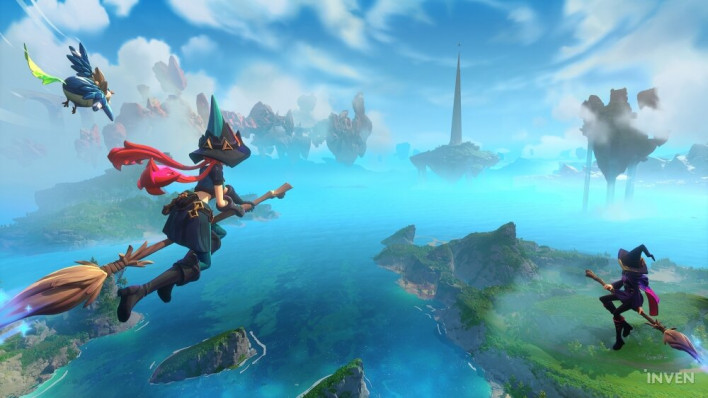
What travel options are there? Are there different broom types?
Liam O’Neill: You can craft multiple broom types—some faster, some slower—and you can also use portals you build or find for fast travel.
In four-player co-op, are there defined roles or synergies?
Liam O’Neill: Customization’s up to the players. Some groups will naturally split roles—one focuses on farming and building, another on exploration and combat—but we won’t stop a party that wants to go full muscle.
How does multiplayer work? Is PvP possible?
Liam O’Neill: You’ll host your own server and invite friends. We’re aiming for small-scale sessions—around 4–6 players, not MMO-sized lobbies. There’s no PvP; it’s fully co-op.
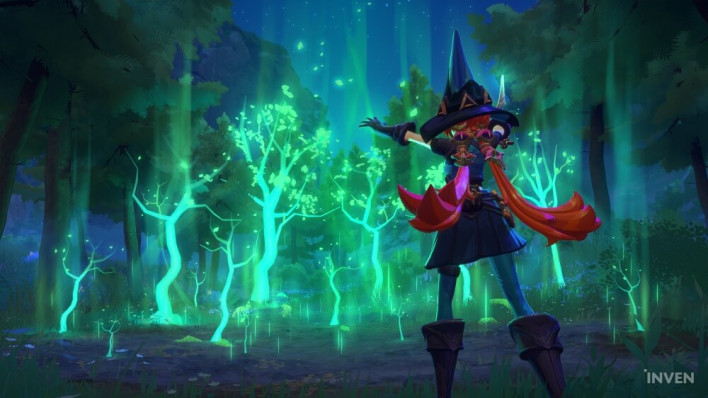
What’s the business model?
Liam O’Neill: Witchspire is a premium title—buy it once and play. We have long-term ideas like expansions adding new worlds, bosses, and creatures, but our immediate focus is delivering a strong experience in Early Access.
When and where can we play it?
Liam O’Neill: Witchspire will launch first on PC via Early Access, with plans to expand to other platforms later. Early Access will run for at least a year—possibly longer.
This article was translated from the original that appeared on INVEN.
Sort by:
Comments :0


